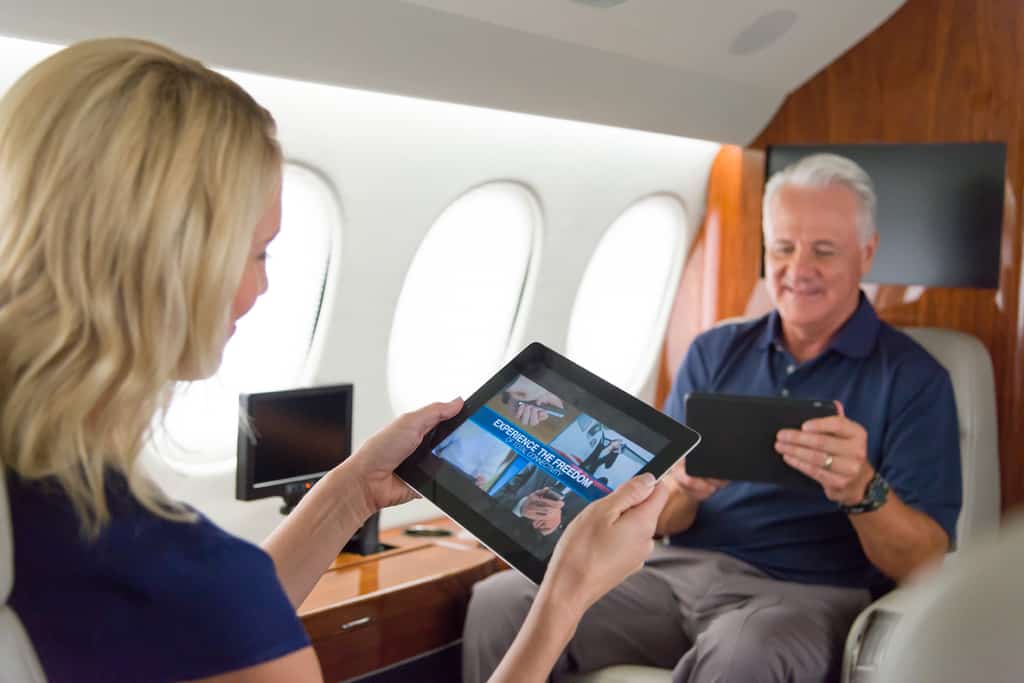Flexibility sets business aviation apart from other forms of travel, making it the most efficient mode of transportation for some and enabling others to make trips that would not otherwise be feasible.
A closer look at one company’s business aircraft usage underscores the value of business aviation. Honeywell International is a Fortune 100 company headquartered on the U.S. East Coast that employs nearly 130,000 people at 1,300 sites in 70 countries. It has a fleet of seven aircraft, six fixed-wing and one helicopter, split between two bases: one a dedicated general aviation facility outside New York City, the other in Arizona. The company also owns shares in a fractional ownership programme to supplement its fleet.
The company’s helicopter gives its flight department an especially versatile tool for its East Coast operations, explains John Tuten, the company’s chief pilot. In many cases, personnel based at Honeywell’s headquarters can be shuttled to meetings in downtown New York or other nearby cities. In addition, it is not unusual for passengers from outside the region to be flown to the East Coast base aboard a company airplane, then switch to the helicopter for an expedited trip into Manhattan.
“Using our aircraft in this way is very efficient,” Tuten says. “It wouldn’t be unusual for a traveler to start the day at headquarters, get flown into Manhattan for morning meetings, return to headquarters, then depart for Washington, D.C. for more meetings, and then to another city for another meeting, and then end the day on the West Coast.”
Single-day, multi-city trips are common, Tuten says. A business airplane’s speed, efficiency and ability to use a wider variety of airports – from close-in downtown airfields to rural general aviation-only facilities – makes it a versatile mode of transportation.

A FLYING OFFICE
Connectivity and other onboard amenities mean that passengers can work as if they are sitting at their desks, participating in conference calls using voice-over-IP connectivity, accessing email, or working away on a laptop.
“The vast majority of the time, our passengers are working,” Tuten says. “With the exception of getting some rest on long flights, our passengers treat the aircraft as a mobile office, which helps boost their productivity. It really does make the aircraft an office away from home.” A prime example of using its business aviation fleet to maximize productivity is when Honeywell’s leaders gather for board or other high-level meetings. In these cases, multiple aircraft will be dispatched to pick up people in different locations around the country. They will all end up at the destination city for the formal gathering. Such meetings can include a dozen or more people who come from thousands of miles away.
“The vast majority of the time, our passengers are working. With the exception of getting some rest on long flights, our passengers treat the aircraft as a mobile office…”
– John Tuten, Chief Pilot, Honeywell
Honeywell maximizes the use of its business aircraft fleet, aiming to have most of the company trips scheduled several months in advance. The fleet totals about 3,800 hours per year in the air – an amount that Tuten said balances the company’s travel needs with its aviation department resources. Fractional ownership shares are used for overflow requests as well as trips with circumstances that would tie up company assets in a less-than-optimal way – “where it makes sense, like a one-way trip where we’re going to save five to six hours of deadheading,” Tuten says.
LAST-MINUTE CHANGES, NO PROBLEM
While the company-owned airplanes are typically booked done to two months in advance, schedules usually aren’t locked in until two weeks to a month before trips take place. And there are times when last-minute trips are necessary. Having in-house assets and crews available makes these kinds of trips more feasible, Tuten says. Last-minute schedule adjustments, such as departing a few hours later due to a longer-than-expected meeting, are also easier to accommodate with company aircraft. “One of the biggest selling points of our operation is flexibility,” Tuten says. “We do get slides in departure times all the time – requests to leave an hour later or two hours earlier.”
While last-minute trips are rare, they are often needed in critical situations. “We don’t really have a lot of pop-up trips, but we do have the flexibility of having standby crews available,” Tuten says. “We’ve scrambled airplanes with as little as three hours’ notice.”
LATEST ONBOARD EQUIPMENT
Most business aircraft have advanced avionics and equipment that maximize safety and efficiency. The systems on Honeywell’s aircraft range from advanced navigation systems that use satellite-based systems, such as Automated Dependent Surveillance-Broadcast (ADS-B), and controller-pilot data link communications, which enables air traffic controllers and pilots to communicate without using often-overcrowded voice channels.
Besides enabling the aircraft to use the maximum number of airports, the advanced equipment also enables the company’s aircraft to serve as flying demonstrators for customers. “We do a lot of customer demonstrations and media demonstrations related to Honeywell products and services,” Tuten says.
